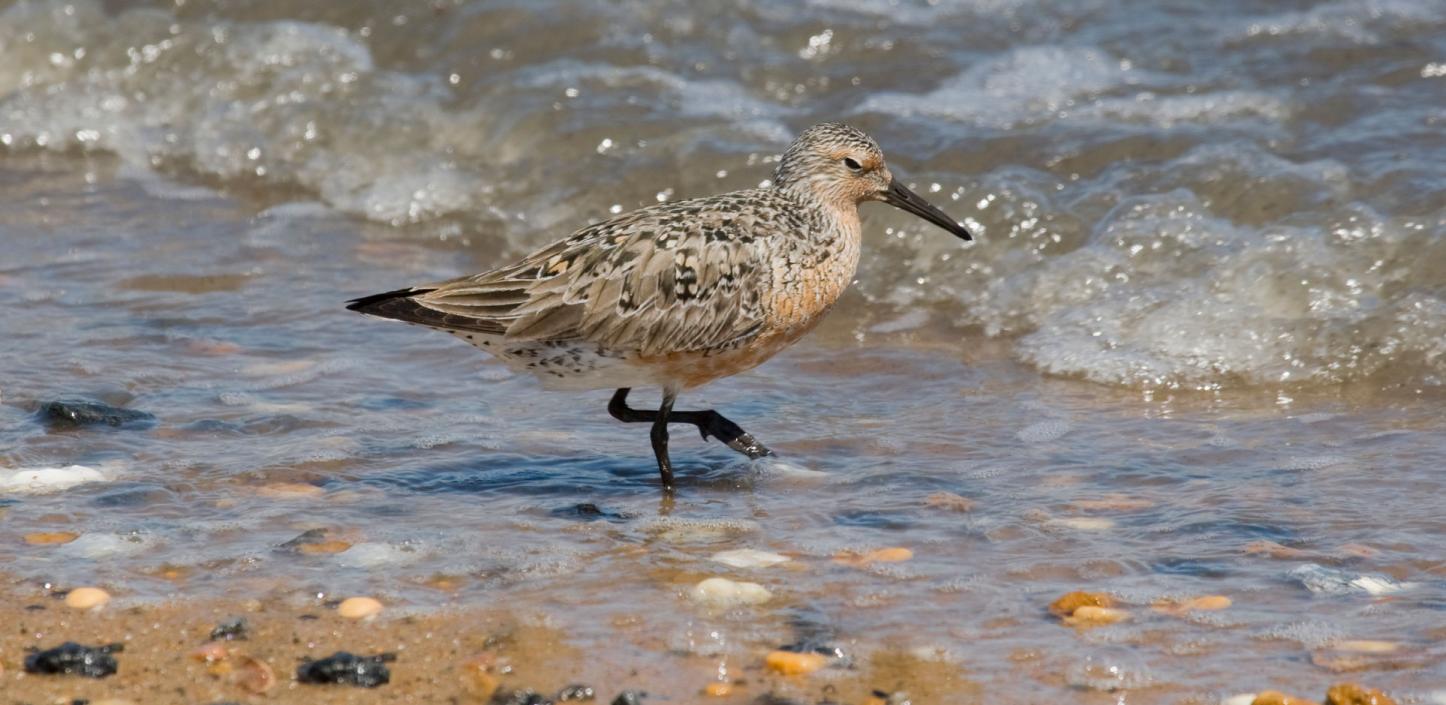
Ready for Red Knots
Each May, southern New Jersey hosts an epic migratory passage of shorebirds. Among the visitors is the Red Knot, a robin-sized powerhouse that flies nearly 10,000 miles from southern Argentina to its Arctic breeding grounds. The Red Knot population has declined in recent years, and the species is listed as endangered. By the time the birds arrive at Delaware Bay in spring, they are famished, having lost as much as half their body weight en route.
Normally, at this point, Red Knots feast on a food uniquely suited to their needs: the eggs of horseshoe crabs, which are laid on the beaches of Delaware Bay. Horseshoe crabs emerge from the water during the full moon in May to deposit their eggs in the sand, providing essential food for a variety of migrating shorebirds.
But when Jersey beaches were devastated by Hurricane Sandy in 2012, scientists feared that damage from the storm would block the horseshoe crabs, interfering with spawning. Severe erosion from Sandy’s winds and waves scoured the beaches, wiping out the sand where the crabs had traditionally spawned. And without the eggs they rely on, the Red Knots, already depleted, could starve before completing their taxing journey to the high Arctic.
To make sure horseshoe crabs could reach the beaches and lay their eggs for hungry Red Knots and other shorebirds, government and private groups quickly launched a beach replenishment plan. Watch the video to see the incredible work done by the American Littoral Society, Wetlands Institute, Conserve Wildlife Foundation of NJ, NJ Dept. of Environmental Protection, USFWS-NJ and American Bird Conservancy, supported by NFWF and its Acres for America partnership with Walmart.